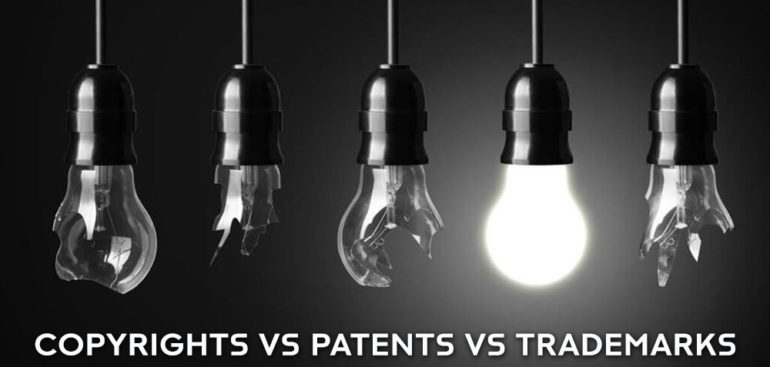GSTR 10 - Final GST Return for Registered Taxpayers in India
18 Dec, 2025

 By Online Legal India
Published On 29 Dec 2020
Updated On 12 Feb 2025
Category Copyright
By Online Legal India
Published On 29 Dec 2020
Updated On 12 Feb 2025
Category Copyright
Intellectual property is basically the creations produced out of human intellect. From artistic works like music to writing, from scientific discoveries to nonscientific inventions – all the creations fall under the criteria of intellectual property.
Intellectual property laws encourage the creation of diverse intellectual goods and also provide protection and safety from unwanted use and theft. The owners of intellectual property can avail legal protection of their intellectual property for a certain period of time.
Intellectual Property Laws offer rights for the owners depending on trademark, patent, and copyright regulations.
There is an ample number of intellectual property owners who can’t determine whether they need to legally protect their property by copyright, patent, or trademark.
One needs to know about these rights distinctively in order to understand how they work. Though there are similarities between all three types of rights, they serve different purposes.
Copyrights were brought into the market to safeguard ownership of artistic works like artsy, literary, musical, and theatrical creations. Copyrights protect poetry, music, songs, pictures, novels, architecture, paintings, computer software, and digital creations.
Ideas are not eligible to be copyrighted through tangible forms of them are. When it comes to artistic works, copyright lasts for the author’s lifetime and also for 70 following years after his death.
Copyrighting creative intellectual property, artists can avail public notice and legal evidence of ownership. In case of any infringement, the true owner of the intellectual property can use his right to sue the suspect in court.
When individuals Register for Copyright, he/she obtains the right to reproduce or copy the works, to distribute or broadcast it, to lend or rent the work. The copyright owner determines who can use their work and in what capacity.
The symbol © represents copyright. The abbreviation “Copr” is also used and sometimes the copyright year is used. When the artistic works are set intangible or material form, copyright protection is granted automatically. No legal restriction process is required in order to establish the copyright.
Authors are advised to keep a record and evidence of their intellectual property. The owner can produce the evidence in the court in case of an infringement issue.
Patents are one exclusive kind of intellectual property rights that is granted to inventions. There are different materials that are worthy to be patentable. Some examples are industrial processes, machines, chemical compositions, and manufactured commodities and artifacts.
Inventors own the patent, otherwise, the organization or individual who is given the right. Patent owners can license their inventions allowing others to make use of it.
In order to be patentable, inventions need to meet certain conditions. They must be unique, new, and not published earlier by anyone else. So it would be wise to register a pattern before publicizing the invention.
The invention must be patentable in order to be usable by industry. It is preferable for the invention to be an apparatus or a manufacturing process rather than a scientific theory, an artwork, or a mathematical design.
There could be several categories of patients such as design patents, utility, and plant patents. The former one lasts 15 years commencing from application issuance. The other two types last for a maximum of 20 years following the filing of the patent application. Also extension and adjusting patent terms are equally possible.
A patent is useful as it safeguards the inventions and keeps people from using them without the inventor’s permission. It restricts the use, sale, and import of the invention without the inventor’s consent. Otherwise, the patentee can take strict legal action against the infringers.
In order to obtain a patent, aspirants have to apply to the intellectual property office which is responsible for deciding whether allowing the patent is possible or not. Though inventors don’t require patents to use their own invention, still it is advised that securing a patent is necessary to keep others from taking advantage out of it.
Protect your brand name, logo, or slogan by registering a Trademark. A ‘TM’ symbol on the brand name or logo means the Trademark application is filed and under process.
Once the Trademark for Registration is done the TM symbol is replaced by a ® mark which means the trademark is registered and valid for 10 years. Any individual, joint owners, limited liability partnership, trust or society, a proprietorship firm, and partnership firm can obtain a trademark.
In legal terms, the popularly known word ‘Brand Name’ is referred to as ‘Trademark’ which is a unique symbol that distinguishes your products or services from your competitors.
The Trademark registered for services is known as Service Marks. Trademarks should be easily remembered but not lose their distinctive nature. While approaching for purchasing a product or service, a customer’s decision is highly influenced by the Brand Value and the reputation of a brand name.